The Jenga Effect
-

I was leafing through the New York Times Magazine recently and came across this eye-catching ad for a new line of cast-iron cookware designed by Mario Batali. The stack of pots and lids, whose color was pretty close to Frank Lloyd Wright's favorite, "Cherokee red," had an architectural appearance, except that the pile looked unstable. Obviously, buildings should look rock-solid. Or should they?
-
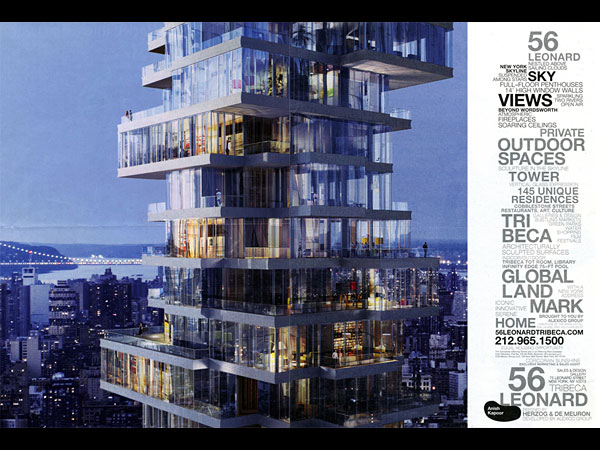
The same issue of the New York Times Magazine contained another ad, this one for 56 Leonard St., a new high-rise condominium in the Tribeca district of New York. I don't know whether the architects, Jacques Herzog and Pierre de Meuron, who describe their project as "houses stacked in the sky," ever played Jenga, the popular game in which players remove wooden blocks to create a tottering tower, but the resemblance is uncanny. Whether a 57-story building this precarious would be exhilarating or merely scary we may never know, since the project is reportedly on hold.
-
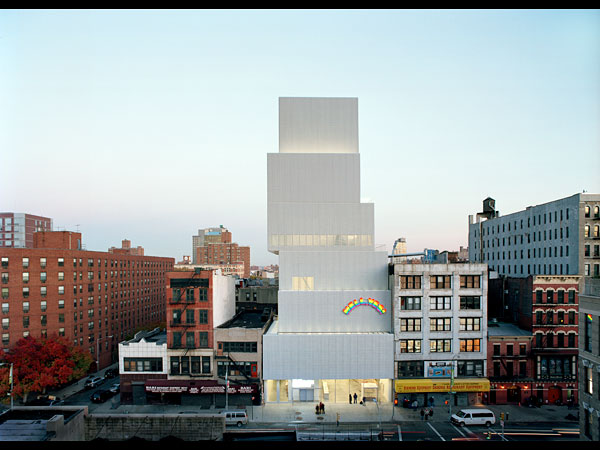
Buildings once strove for solidity—not merely to be stable but also to look stable, hence the optical corrections in ancient Greek architecture such as entasis, a subtle tapering of columns that makes them appear more settled to the human eye. Even the Empire State Building tapers as it rises, as if to assure us that the tall structure will not tip over. Not anymore. The New Museum of Contemporary Art in New York resembles a stack of elegant shoe boxes that have casually shifted this way and that. Of course, the "boxes" are make-believe. Buried inside Tokyo-based SANAA's mannered composition is a conventional steel frame with added diagonal struts and transfer beams to support the desired cantilevers. Nevertheless, the building has met with so much acclaim that the architects have designed a slightly tamer 25-story version—Torre Neruda—for Guadalajara, Mexico.
-
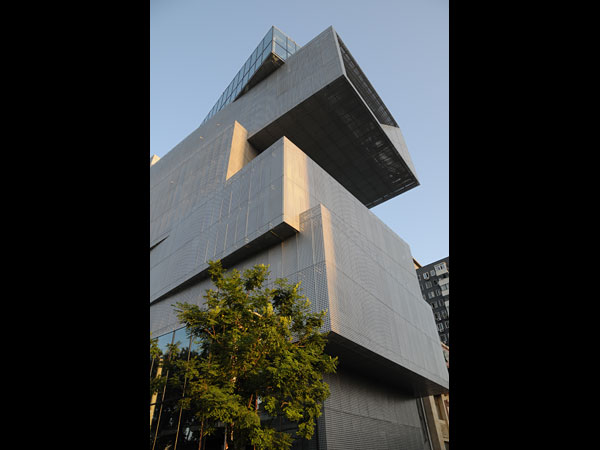 Photograph by Liu Ruohan. Courtesy Studio Pei-Zhu.
Photograph by Liu Ruohan. Courtesy Studio Pei-Zhu.Publishing House in Beijing is designed by Pei Zhu, who was the architect of Digital Beijing, the main data center for the Beijing Olympics. Zhu's design here is said to have been inspired by an untidy stack of books. The stacking effect is likewise entirely illusory, since this is really a renovated 1970s-era 12-story office block transformed by the addition of cantilevers and angled extensions. The building has a distinctly odd effect on the surrounding city, as if giant forms had fallen out of the sky and landed haphazardly on the street.
-
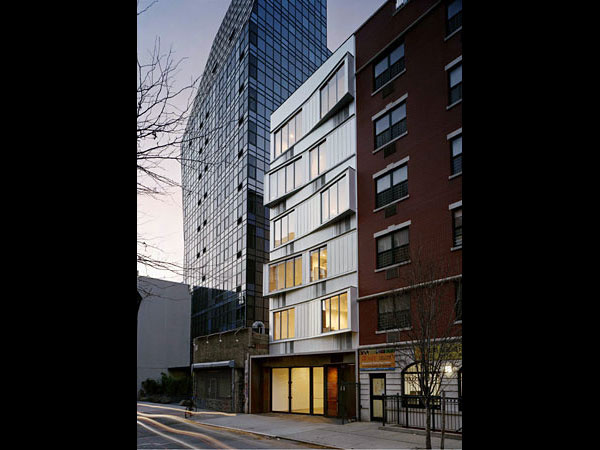 Photograph courtesy Frank Oudeman.
Photograph courtesy Frank Oudeman.The fashion for stacked buildings might be an architectural metaphor for our shaky times, but it comes across as an unconvincing and unarchitectural one-liner. 109 Norfolk St. (right) is a boutique condo building on New York's Lower East Side whose five apartments went on the market last year, starting at $1.3 million for 1,450 square feet. The designers, nArchitects, call it the Switch Building, either because the projecting bay windows are tilted in different directions or because they resemble giant light switches. Either way, they create a facade that seems to be in danger of sliding apart.
-
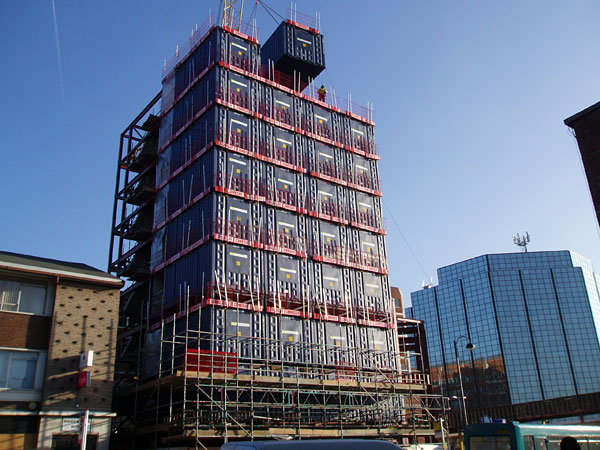 Photograph courtesy Travelodge.
Photograph courtesy Travelodge.In contrast to simulated stacking, this budget hotel in West London is a real stack of real boxes. The 120 individual rooms are prefabricated steel boxes, fully equipped with bathrooms, electrical wiring, and painted walls (though not furniture). Made in Shenzhen, China, they were transported to Britain by container ship, trucked to the site, and hoisted into place. In this kind of construction, the boxes do support one another—no additional structure is required—but unlike its high-design counterparts, this building doesn't shimmy and shake. Nor does it dramatize the stacking technique; the completed pile of boxes was wrapped with conventional—and rather banal—steel facades.
-
 Photograph by Milica Stefancic.
Photograph by Milica Stefancic.The granddaddy of real stacked buildings is Habitat 67, a housing complex designed by Moshe Safdie for the Montreal 1967 World's Fair. The prefabricated concrete boxes are piled up 10-high. Although Habitat proved an exceptionally popular place to live, building with heavy concrete boxes is expensive and has not caught on. Yet the concept remains attractive. (Full disclosure: I worked on this project shortly after college.) While the rather loose arrangement appears random, it maximizes views from within the houses and provides one or more garden terraces for each unit. And the pyramidal stack looks very solid.